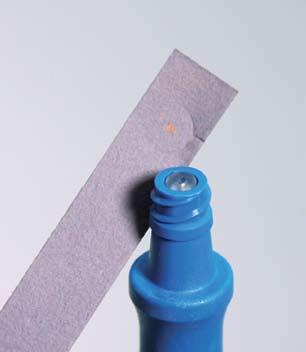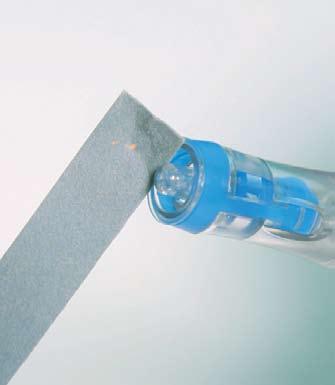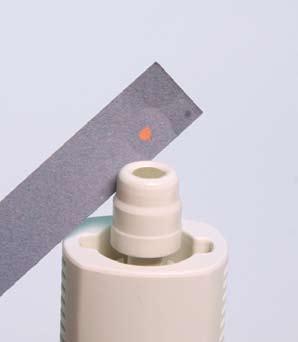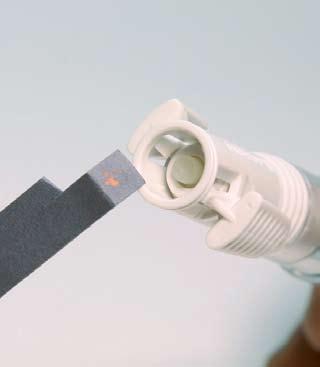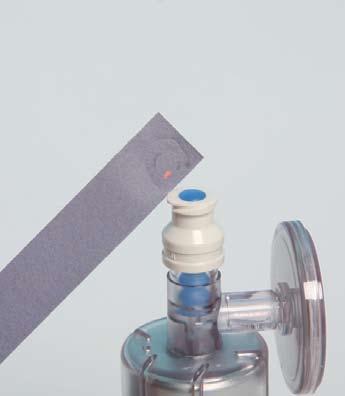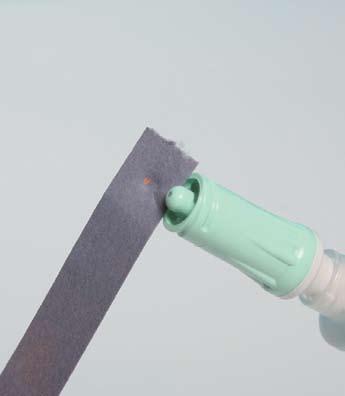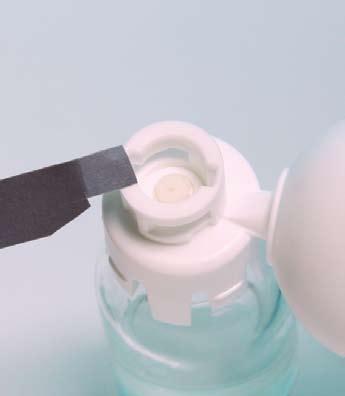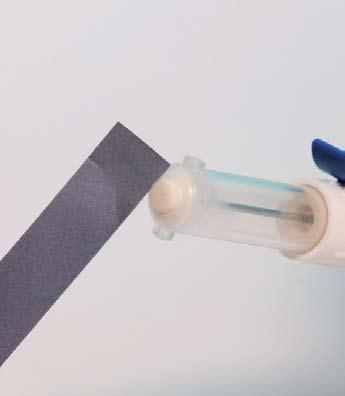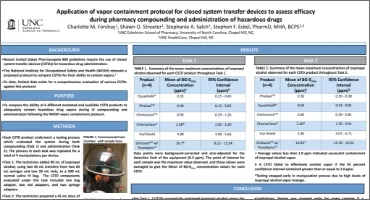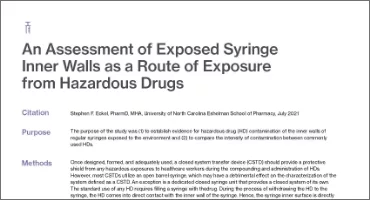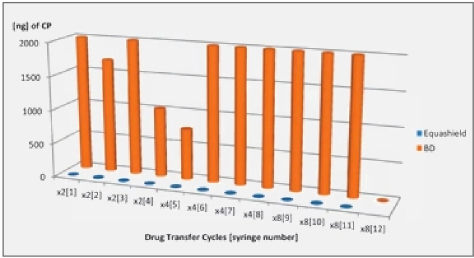Objective
To determine if the ICU Medical System, B. Braun OnGuardTM System, Cardinal Health/Alaris System or PhaSeal® System connections are leak proof or have the potential to allow drugs to escape into the environment during the preparation and administration phases of hazardous drug handling.
Methods
Four transfer devices were tested:
- The ICU Medical System (SpirosTM Male Connector & Clave® Connector)
- The B. Braun OnGuardTM System (Vial Adaptor & Syringe Adaptor) by Teva Medical Ltd.
- The Alaris System (SmartSite® Vented Vial Access Device & TexiumTM Male Luer) by Cardinal Health
- The PhaSeal® System (Protector & Injector Luer Lock) by Carmel Pharma
A liquid with low pH was used as a substitute for active drug. Litmus paper was used as a pH indicator. Blue litmus paper turns red under acidic conditions.
Syringes were filled with fluid and injected into vials attached to the above transfer devices. After aspirating back and disconnecting, the connections of each device were pressed against litmus paper to detect the presence of any fluid.
Every component of each device was tested for 10 manipulations.
Results
Visible leakage occurred outside of the components on the ICU Medical System SpirosTM and Clave® connections, the B. Braun OnGuardTM System and the Cardinal Health/Alaris System during all manipulations.
No leakage was observed in any of the manipulations with the PhaSeal® System by Carmel Pharma.
